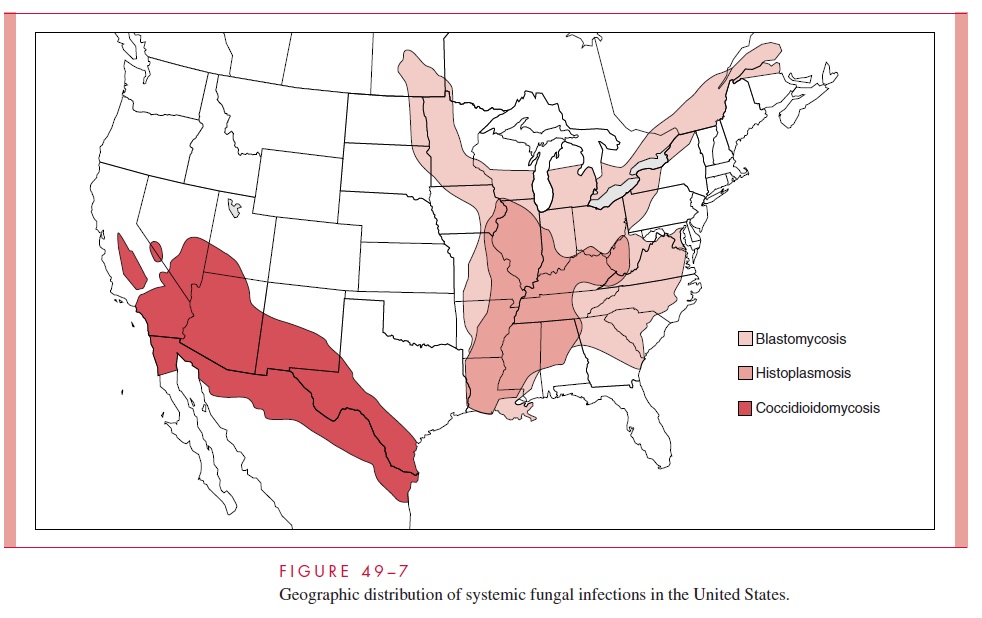Chapter: Medical Microbiology: An Introduction to Infectious Diseases: Cryptococcus, Histoplasma, Coccidioides, and Other Systemic Fungal Pathogens
Blastomycosis
BLASTOMYCOSIS
Most clinical features of blastomycosis are similar to histoplasmosis. Patients are asymptomatic or have only mild fever and cough unless the disease progresses outside the lung. Skin lesions are the most common manifestation of disseminated disease, not reticuloendothelial organ involvement.
EPIDEMIOLOGY
Cases of blastomycosis follow a geographic distribution and conditions for maturation of conidia in the soil, which are similar to that of histoplasmosis (see Fig 49–7). Most infec-tions occur in the middle and eastern portions of North America, but cases have been re-ported worldwide. The lack of a specific skin test limits study of the endemic area.

PATHOGENESIS
Much less is known about blastomycosis than the more common systemic mycoses, such as histoplasmosis and coccidioidomycosis. The lower frequency of disseminated infections and the nonspecificity of skin and serologic tests are partly responsible for this lack of in-formation. Much of what is believed to be true of blastomycosis is based on analogy with histoplasmosis.
The primary infection is pulmonary after inhalation of conidia, which develop in soil. Surface glucans and a glycoprotein adhesin (BAD1) have been identified, which bind the fungi to receptors on host cells, macrophages (CR3 and CD14), and the extracellular ma-trix. A mixed inflammatory response results, which ranges from neutrophil infiltration to well-organized granulomas with giant cells. The organisms grow in tissue as large yeasts with thick double walls with blastospores attached. A significant difference from Histo-plasma is that the yeast cells are primarily extracellular rather than within macrophages.This may be due to their relatively large size, but there is little to suggest that B. dermati-tidis shares the propensity for intracellular parasitism that is characteristic of H. capsulatum.
IMMUNITY
The principal host defense mechanisms against B. dermatitidis have not been clearly de-fined. The fungal cells activate the complement system by both the classical and alternatepathways, and antibodies directed against a glucan component of the cell wall have been identified. These antibodies decline as the infection resolves. As with other fungi, T lym- phocyte–mediated responses appear to be the most important determinants of immunity.Macrophages activated with cytokines have enhanced capacity to kill B. dermatitidis.
Related Topics